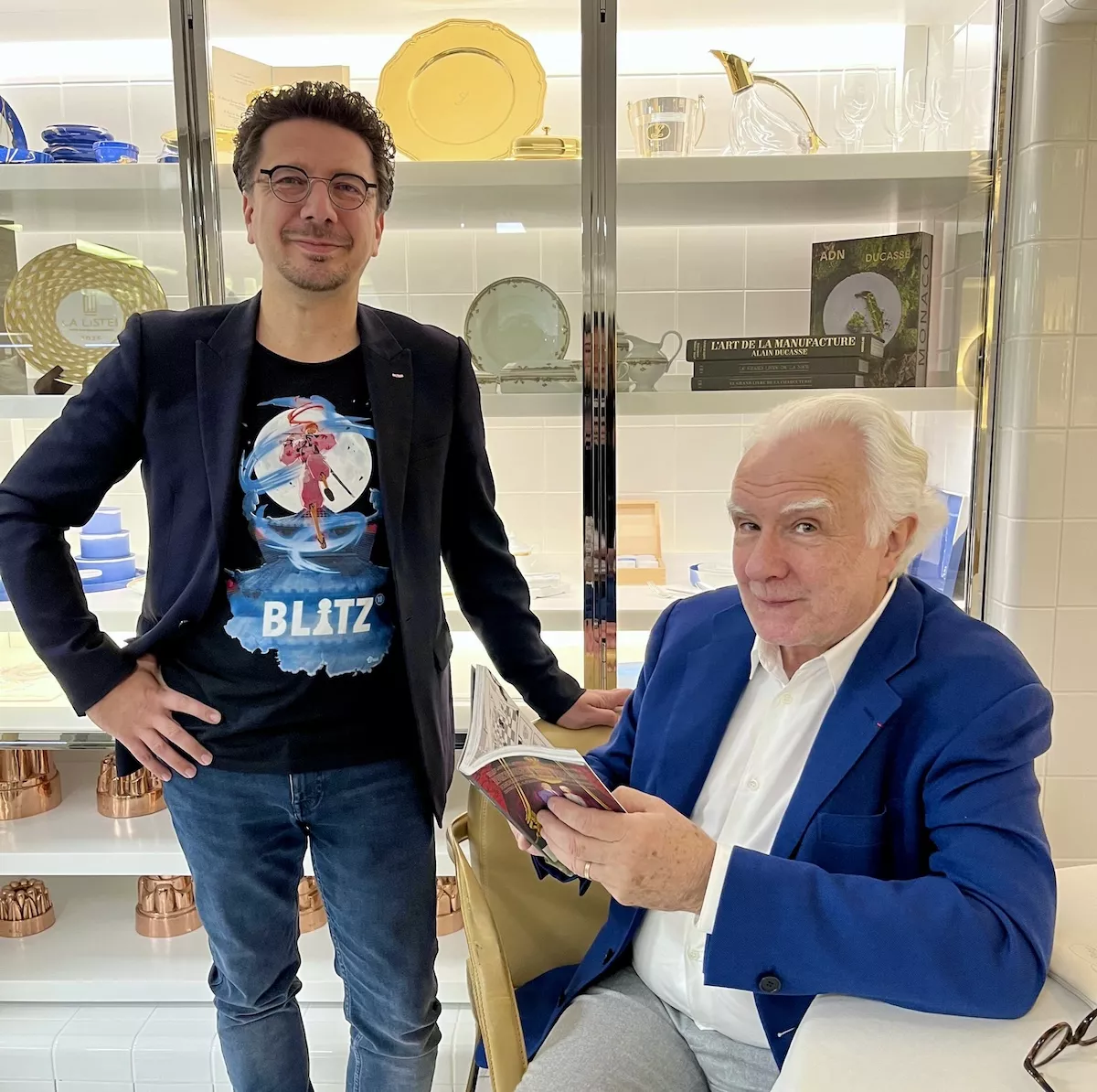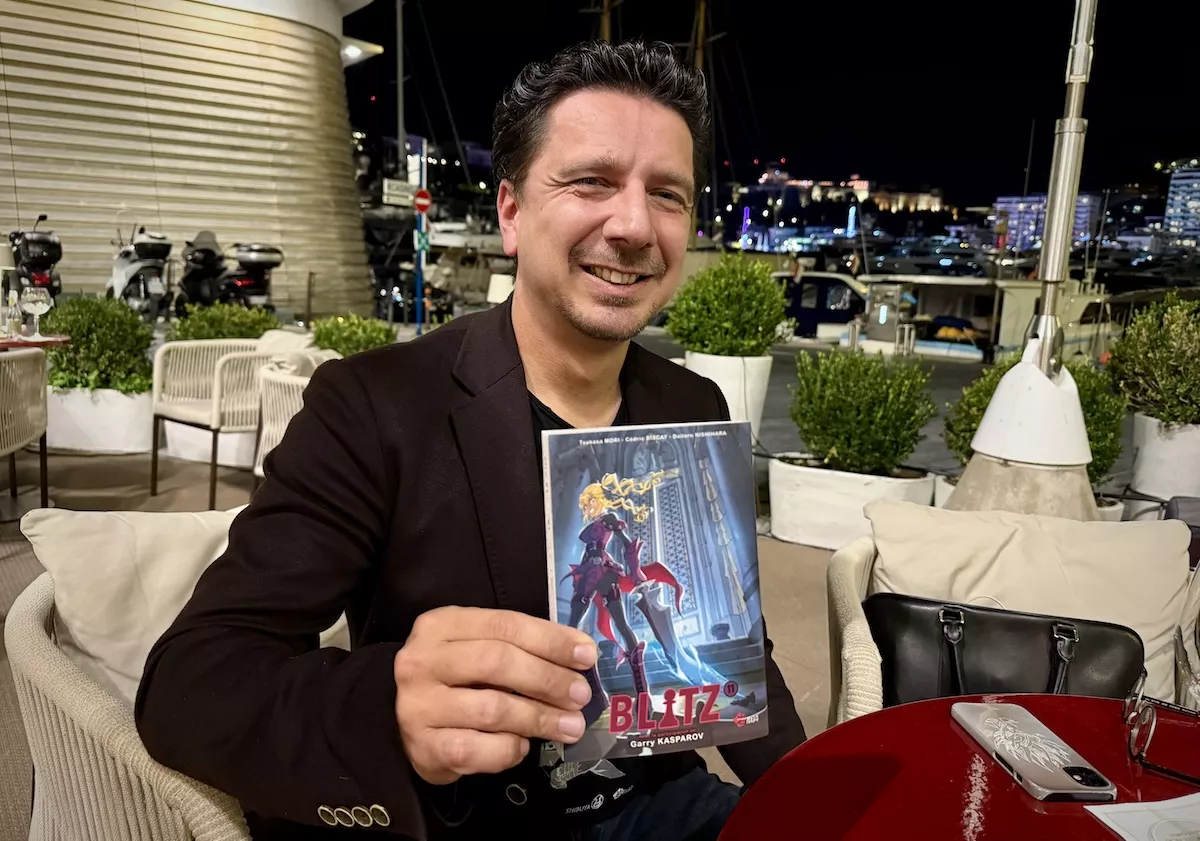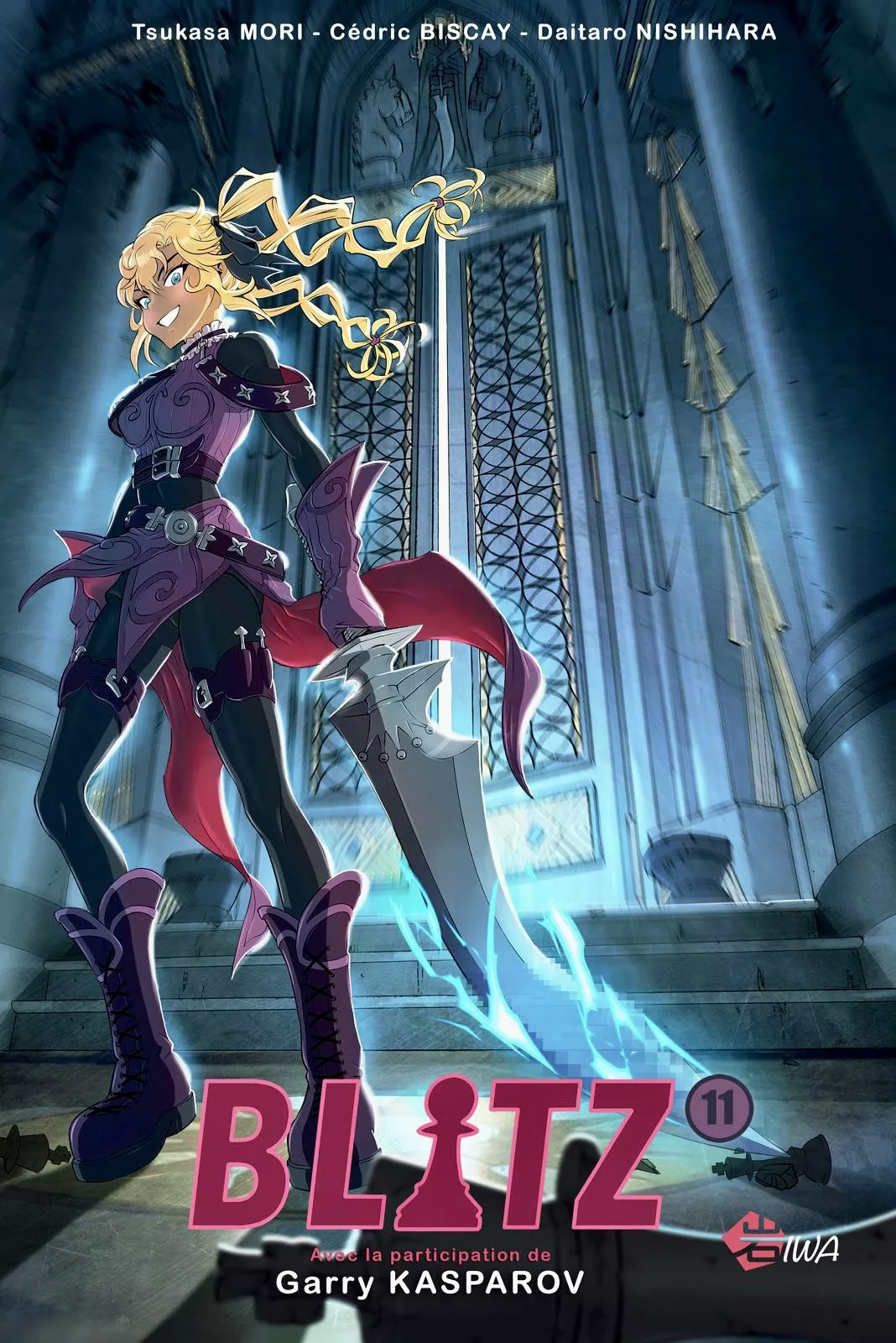The chessboard is set once again — but this time, the entire game plays out in Monaco. Blitz, the internationally acclaimed manga created by Cédric Biscay and illustrated by Japan’s Daitaro Nishihara, has just released its long-awaited Volume 11, and for the first time since the series began, the Principality is more than just a backdrop: it’s the main stage.
Now in its 11th instalment, Blitz has become one of Europe’s most recognisable manga series — selling over 200,000 copies in France alone and building a loyal following across chess communities and manga fandoms alike.
Its creator, Monaco-based producer and writer Cédric Biscay, has achieved something rare: a successful manga outside Japan that blends sport, celebrity and storytelling, all anchored in the unique world of Monaco.
The manga’s characters train with chess legend Garry Kasparov — who also serves as an advisor to the series — and face off in high-stakes tournaments against the backdrop of Monaco’s most iconic landmarks. The result is a story that connects with young readers, while subtly reshaping how Monaco is seen around the world.
“I’ve always believed Monaco is under-appreciated globally,” Biscay tells me. “It’s known for the yachts and the Grand Prix — but I wanted to show that it’s also a place full of culture, story potential, and creativity.”
Since its debut in early 2020 — and despite launching just as the world went into lockdown — Blitz has defied the odds to become a new kind of soft power tool for the Principality.
It’s also inspired manga-based activism, including a collaboration with Monaco’s Women’s Rights Committee on a special issue addressing school harassment.
I sat down with Cédric Biscay to talk about Blitz’s evolution, Monaco’s role in the story, and why manga may be the most unexpected — and effective — cultural export the Principality has yet embraced.
Volume 11 of Blitz is now out, and it’s set entirely in Monaco. Why did you decide to bring the story home?
The main tournament in Volume 1 started in Monaco, but now it’s finally time for the real action. Almost 100% of this volume takes place in the Principality — the Casino, the Hôtel de Paris, all the iconic buildings are in the manga. We’ve also included real-life guests like chef Alain Ducasse and Formula 1 driver Valtteri Bottas. They’re not just there for the sake of it — they’re part of the story and interact with the characters in meaningful, and often funny, ways.
When Blitz launched in 2020, did you imagine it would grow into such a long-running series?
In my mind, yes — I always thought it could be a long series. But in reality, the manga market is so competitive, you never know if your title will survive. We released Volume 1 in February 2020, then two weeks later came lockdown. The manga wasn’t on Amazon, so we had zero sales for four months. I was in panic mode.
But because it was a new story, and about chess, people waited. When shops reopened, the libraries and stores still had the manga on the shelves, which is rare — normally new titles get replaced very quickly. I was lucky, and sales picked up. That gave me the confidence to continue.
You’ve said you want Blitz to show another side of Monaco. What do you mean by that?
I’ve always believed Monaco is undervalued globally. It’s famous for the Grand Prix and yachts, sure — but there’s so much more here. I wanted to show that Monaco can also be a place of culture, creativity, and inspiration.
A lot of people think Monaco is inaccessible, or too expensive. But now, I get messages from parents saying their kids are asking to visit Monaco because of Blitz. That’s amazing. If the manga can help bring new people here, especially young people, I’m very proud of that.
You’ve even included Prince Albert and Princess Charlene in the story.
Yes, and it’s a great honour for me. They trust me and the story I write. It’s important for me to represent Monaco in a way that’s authentic, but also exciting for the next generation. To make Monaco ‘cool’, you have to speak to them — not just to investors or the ultra-wealthy.

You’re known as the creator of Blitz, but who else is part of the team behind the manga?
I work with Daitarō Nishihara, a fantastic Japanese illustrator who previously worked on Pokémon. I also have help on the dialogue from Makoto Fukami, who brings a lot of depth to the characters. And then there’s Garry Kasparov — the greatest name in chess — who’s been involved since the beginning. Not just for advice, but as a recurring character in the manga. Having him on board brings trust, and of course, it helps with marketing.
What kind of impact have you seen Blitz have on readers? Are young people actually taking up chess because of it?
Yes, and I hear stories like that all the time. The French Minister of Sports even said, during a press conference with the French Chess Federation, that Blitz has helped bring more people — especially kids — into chess clubs. I saw a local newspaper article recently where a child said, “Thanks to Blitz, I started playing chess.” That’s exactly why I created this series, and why Garry agreed to be involved — because we can connect with a younger audience through manga.
You’ve also used Blitz for social causes. Can you tell us about your work with Monaco’s Women’s Rights Committee?
Yes, I had a great collaboration with Céline Cottalorda and the Women’s Rights Committee. She asked me to be an ambassador, and I said yes — but only if I could do something concrete. I didn’t want to just show up at events. So we created a special edition of Blitz dealing with school harassment. One of the female characters is bullied, and we made a short story around that.
This kind of storytelling reaches kids in a way that flyers or conferences never could. We also organised a pop culture event around 8 March (International Women’s Day) with cosplay, and it was very well received. It’s rare to have those kinds of open conversations in Monaco, especially with the government, which can be more traditional.
Beyond the manga, you’re also behind Monaco’s pop culture events like MAGIC and ComicCon. What’s next on that front?
Last year we organised ComicCon at the Grimaldi Forum and it was a big success. Unfortunately, the rights holder doesn’t want to do it again, so we’re hoping to bring MAGIC back. We’re currently looking for investors to make that happen.
Is part of the success of manga its format — short, episodic stories that appeal to today’s fast-paced attention spans?
Yes, definitely. Manga works like a TV series — it doesn’t end with one volume. You finish one and you want to read the next. It keeps the momentum going and keeps readers engaged.
How many languages is Blitz now available in?
It’s published in French, English, Japanese, and Italian. Italy is huge for us, actually. I was just at Lucca Comics & Games — the biggest pop culture event in Europe with more than 400,000 visitors. I did a signing session and a talk there, and we sold out of stock. I didn’t expect that at all — it was my first signing outside of France and Monaco. And suddenly I’m there, surrounded by huge names from Japan and the US, even the full cast of Stranger Things. Crazy.
You’re also working on the long-awaited Astro Boy reboot. How’s that progressing?
That project is over 10 years in the making. At first, we were supposed to work with Cartoon Network, but then there was a change in management and the deal fell apart. I lost everything. But now we’re producing the reboot with Mediawan and TF1, and it’s finally on track. I can’t say the release date yet, but I’m proud — especially because I’ve managed to hold onto the Astro Boy rights for so long. The trust from Japan means a lot to me.
One last question — what are your thoughts on AI in creative industries like yours?
Honestly, I’m not a big fan. Of course, it’s already here, and producers will start using it for low-cost content. I’ve had people approach me about using AI for manga or animation. I think it will improve over time — it’s already impressive — but creativity will still come from humans. Real writing has imperfections, and that’s what makes it human. That’s what gives it character.
We’re living in a world of trends — first it was the world wide web, then crypto, and NFTs, now it’s AI. But I believe people will always come back to real stories made by real people.
Stay updated with Monaco Life: sign up for our free newsletter, catch our podcast on Spotify, and follow us across Facebook, Instagram, LinkedIn, and Tik Tok.
Main photo credit: Cassandra Tanti


